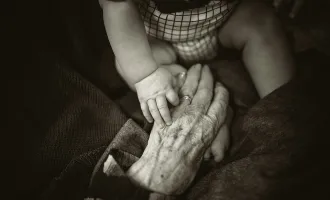It’s not about the food: Shaking off stigmas and misperceptions about eating disorders
“I have something going on with me I want to tell you about.”
Allison Guerin, assistant director of graduate education at UCSF, meets with her aunt regularly to catch up on life. These conversations usually come easily, but not this one. It will be the first time in 5 years she tells anyone about her struggle with an eating disorder.
“Eating disorders feed in isolation,” Guerin said in an interview with Synapse. “You’re not going to get past it without telling people.” Yet, the 2011 international epidemiological study conducted by Wade et al. found that 20 million adult American women and 10 million men suffer from a clinical eating disorder (ED), with many more cases left unreported.
A brief survey of social media will yield a volley of words and images that espouse a dubious standard of health and beauty. The norm of individuals feeling dissatisfied with their appearance masks the prevalence of more insidious disordered thoughts towards diet and exercise. Eating disorders—including anorexia nervosa, bulimia nervosa and binge eating—can cause osteoporosis, hormonal imbalances, ulcers, muscle wasting, heightened risk of heart failure and even death. While people with EDs are widely perceived as skinny, white women, they actually have quite a diverse profile; the National Eating Disorder Association (NEDA) reports that EDs affect people of every age, gender, body type, ethnicity, and socioeconomic status.
ED behavior starts early. A 2006 study conducted by Elizabeth Collins found that 81 percent of 10-year-olds reported feeling afraid of being fat; the majority of children surveyed later developed an eating disorder.
UCSF’s Benioff Children’s Hospital seeks to curb the rising rate of eating disorders. Sara Buckelew, the clinical chair of UCSF’s Adolescent Eating Disorder Clinic, said early intervention is key in mitigating the damaging effects of eating disorders, but the stigma surrounding the condition makes treatment difficult. “Often families have guilt and blame themselves. . . If someone has cancer then people may bring the family food and support them. With ED, this doesn’t happen the same way because parents don’t want to share about their child’s ED.”
Despite the impact of these conditions, very little funding goes into research. In 2011, $25 million was granted for ED studies that will impact the lives of 30 million Americans. For comparison, Alzheimer’s disease affects 5.1 million Americans, and in 2011 the National Institute of Health granted $420 million to researchers.
UCSF’s community has contributed several improvements to medical interventions for this population. Andrea Garber, associate professor for pediatrics, has investigated the benefits of more aggressive medical intervention for individuals with anorexia, showing that higher calorie re-feeding protocols are more effective in improving quality of life and other health measures. Daniel Le Grange, director at UCSF’s Adolescent Eating Disorders Clinic, in line with these findings, found that quality of life is best improved by addressing harmful behaviors and regaining healthy weight.
Guerin noted that her eating disorder was never about food, but rather a way to control and cope with challenging feelings and life circumstances. After reaching a tipping point, she enrolled in a 12-week intensive outpatient treatment program for her eating disorder. Group treatment proved to be a powerful experience, as she reflected: “Hearing people share the same thoughts and fears that were in my own head was surprising and made me feel I was not the only one.”
Guerin emphasized, however, that recovery from an eating disorder isn’t a “once and done” deal, and that she continues to use the new skills and coping strategies gained through treatment to manage difficult emotions.
Fortunately, San Francisco boasts a wealth of resources for people with EDs: UCSF offers students 10 free counseling appointments as well as weekly talks about healthy body image, stress management techniques, and balanced nutrition. Locally, the Woodleaf Eating Disorder Center provides intensive outpatient care, which can also provide referrals to inpatient treatment as needed. For more information about eating disorders, check out nedawareness.org.
Starting a conversation about EDs with someone can be difficult. Most importantly, express care for the individual’s overall well-being rather than their appearance. Buckelew recalled a primary physician of 30 years asking her for advice on how to help a colleague he was concerned about: “If you’re concerned, it’s OK to express this and provide resources. At least you’ve done your due diligence.”


